13 Workplace Dramas That Outdo Any Soap Opera

Let us play a little guessing game, shall we? Can you name the sixth-largest river on Earth in terms of volume? That’s the amount of water that flows through a waterway. The first couple of rivers are easy to list.
Number one is, of course, the Amazon River [South America]. Then we have the Congo [Africa] and the Ganges [India]. Feel free to name all the rivers on the planet. You won’t get any closer to the answer. Why? Because this river is not on the surface but underneath the waves of the Black Sea.
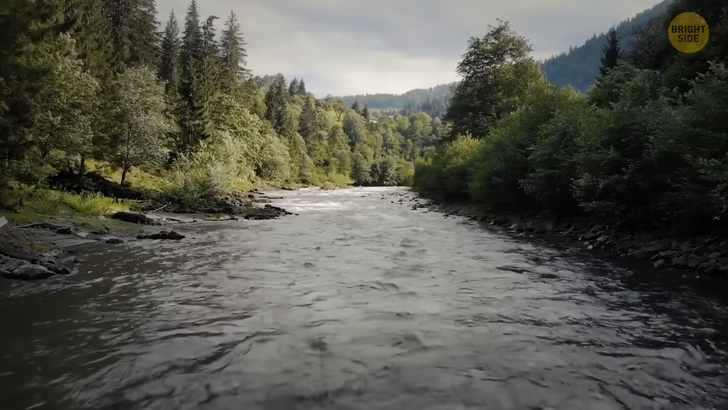
In 2010, a team of scientists discovered this river while studying the Bosphorus Strait in Turkey. Sonar scanning revealed a channel at the bottom of the Black Sea. The channel had water flowing through it. It turned out that at places, it is 115 feet deep. That’s three times as tall as your average telephone pole. This flow of water acts as a real river. It has rapids and waterfalls. And its volume is 350 times greater than that of the River Thames [London]. Talk about a strong undercurrent.
If it was a surface river, it would really be in the top ten. Bad news for the Madeira River [Bolivia/Brazil]; the present number six. But how did this underwater river form? The answer lies in the amazing features of the Black Sea. It gets its water from two main sources. The first are the rivers that flow into it, like the Danube, Dnieper, and Don. A lot of Ds there. But more importantly, they are all freshwater waterways. On the other side, quite literally, there is the Mediterranean. And it is salty, like, a lot. When this saltwater gets inside the Black Sea, it goes straight to the bottom.
You see, freshwater is lighter than saltwater. This creates stratification. A fancy term that simply means that the two types of water don’t mix together. Saltwater has a higher density, so it drops right down and to the bottom.
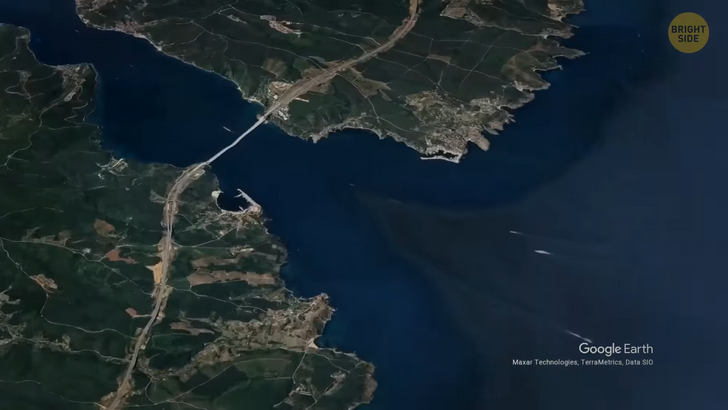
If you wanna see how that works, you can do an experiment at home. Pour mineral water into one cup and saltwater into another. Table salt will do. Then put a grape in each cup. You’ll see how it immediately sinks to the bottom of the cup filled with fresh water. The grape will stay afloat in the cup filled with saltwater. The same thing is happening inside the Black Sea.
But there is another side to this phenomenon. The upper layer of water is rich in oxygen. This means it can support life. The bottom layer, however, is anoxic. Yup, you’ve guessed it, this means there is no oxygen at the bottom. But this is not a bad thing. Because of this trait of the Black Sea, shipwrecks are able to survive for centuries. Oxygen decomposes wood. And from what material did the ancient people make their ships? That’s correct: timber. Recently [2018], scientists discovered the oldest Greek shipwreck on Earth. The merchant ship lies more than a mile deep at the bottom of the sea. Experts estimate that the vessel is 2,400 years old.
The wreck was valuable for historians to study all the elements of ancient ship construction. From the mast to the rowing benches, it is all intact. The wreck lies some 50 miles off the coast of Bulgaria. But no one has seen it in person. Explorers sent a deep-sea ROV [Remotely Operated Vehicle] to film the wreckage. It was impossible for a diver to go down. Hmmm, but the Black Sea doesn’t look that huge on a map. Could it be that deep? Oh yes, it is way deeper than people think. You could stack six Empire State Buildings at the deepest point of the Black Sea [7,257 feet].
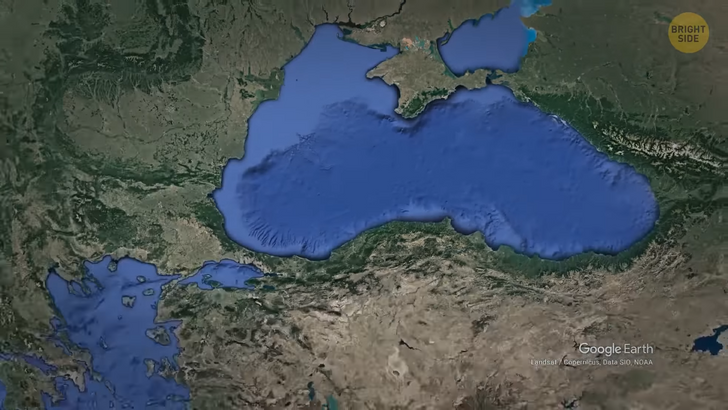
This inland sea isn’t the only place on Earth where researchers have discovered shipwrecks and underwater rivers. One of the largest channels running along the ocean floor lies off the coast of South America. It runs from the mouth of the mighty Amazon and into the Atlantic Ocean. Studying underwater rivers isn’t an easy task. The depth and the strong currents make it impossible to send in divers. Even the equipment for underwater research has to be sturdy. Otherwise, the current will just wash it away. That’s why the underwater river in the Black Sea was ideal for scientists to explore.
Earth’s oceans and seas are powerful. But luckily for us, there are places where divers can admire underwater rivers. Ever heard of a cenote? Sounds Spanish. That’s because it is. Cenotes are underground caves. They form after the limestone above collapses, revealing the groundwater under them. The term cenote is associated with the Yucatán Peninsula in Mexico. Ancient Maya used them as water sources [wells]. In the Mayan language, the word cenote [dzonot] meant sacred well. Researchers estimate there are some ten thousand cenotes spread across the Yucatán Peninsula. You can also find them in other places, such as Cuba and Australia.
Beauty is in the eye of the beholder, but unofficially the most beautiful cenote is located just south of the town of Tulum [Mexico]. The name reflects the cave’s divine beauty: Cenote Angelita. But people don’t visit this cenote to go swimming: its bottom is much more interesting. A scuba tank is all you need to finally admire an underwater river first-hand. The waters are dark and foggy, so divers use powerful flashlights. After a hundred-foot dive, a marvelous sight appears. An underwater river with trees along its banks. Some of them even have green leaves, just like any other water flow on dry land. But it’s not really a river.
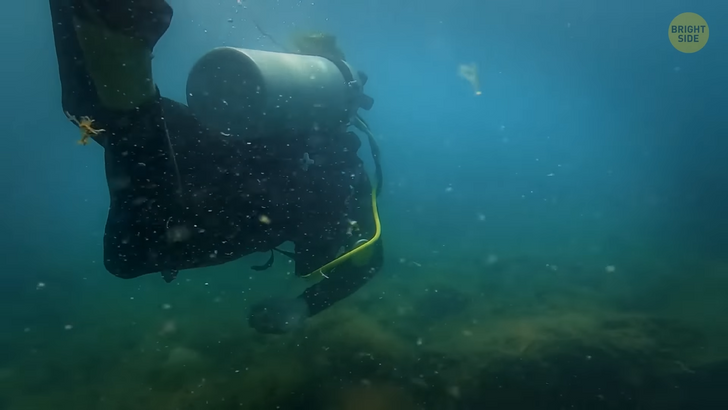
Here comes the fascinating part. Remember how saltwater and freshwater don’t mix? Well, the river the divers see is actually a thick layer of fog between the two types of water. Three feet of hydrogen sulfates, to be exact. This is the compound that water processing plants use to remove chlorine from drinking water. The substance is so heavy that the fog it produces moves independently of the surrounding water. And it creates an illusion that a river is flowing underwater.
But there are other, real rivers that play tricks on you. Take, for example, the Mystery River in Indiana. It is the longest underground river in the United States. Explorers discovered the river and its cave system [Bluespring Caverns] in the 19th century. Nearly 3 miles of the river are navigable. Isn’t that impressive? You can book a boat tour on a river that you cannot even see.
But the most mysterious river on the planet is the Saraswati River in India. The coolest part about it is that... it doesn’t exist. It was an alleged river only mentioned in ancient literature. For centuries, people thought that it was just a myth. Then satellite images showed that it might be real. Ancient texts spoke of a major confluence [near the modern-day city of Prayagraj] of three mighty rivers [The Ganges, Yamuna, and Saraswati]. The first two are visible today, but where is the third one?
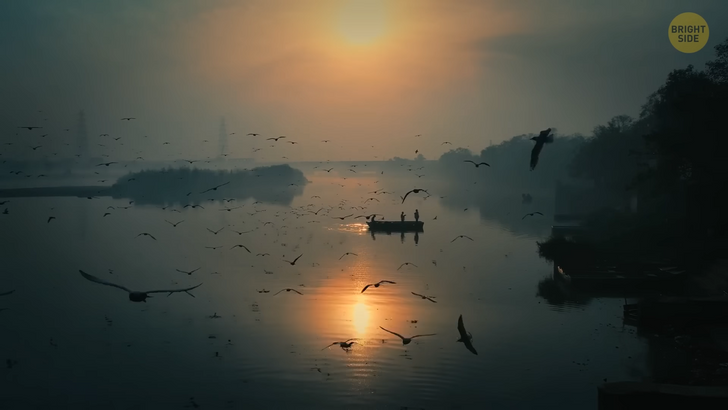
That’s what scientists decided to find out. Images from an American satellite showed the presence of underground water in the area. Until then, researchers thought that these were palaeo-channels. This simply means that water flowed through them a long time ago. But to their surprise, it appeared that there was still water inside these channels. Scientists estimated that the Saraswati River flowed above the ground some five thousand years ago. But it didn’t dry up completely. It just went underground. Some two hundred feet below the ground. Local experts believe that the river still slowly flows into the sea.
The Saraswati River got hidden under the desert sand. This was a natural process. But many rivers have been forced underground because of human activity. In London [England], several dozen small and medium-sized rivers now flow under the ground. Maps from the 19th century still show them as rivers. But today, they only exist in the names of the streets that were built above them [Fleet Street]. The same thing happened in New York. But this doesn’t mean that these streams have disappeared for good. When engineers want to rebuild or modify a building, they still consult city maps from centuries ago. No one wants a long-lost brook to flood their basement.











